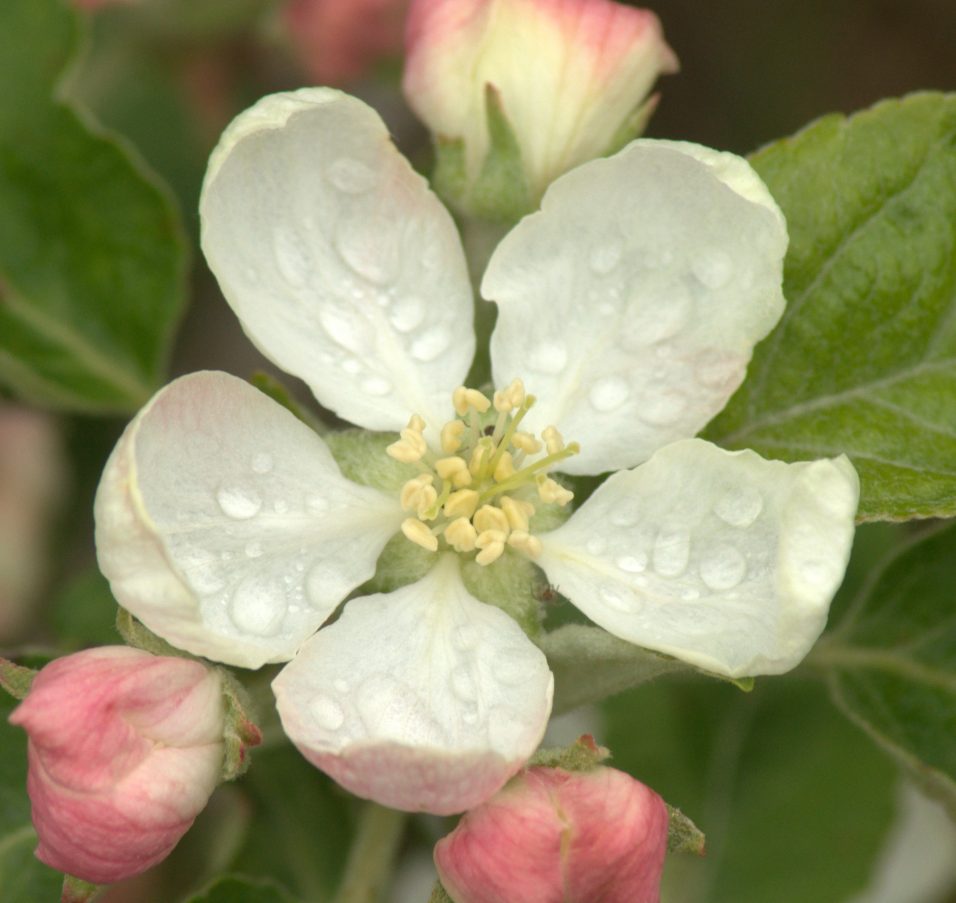What’s Growing at the Harriet Irving Botanical Gardens: Apple Blossom and the E.C. Smith Herbarium
By Alain Belliveau, Collections Manager
The history of the Apple Blossom Festival is long and rich, dating back all the way to 1933. One tidbit that I only recently learned was that even though the festival’s date is decided years in advance nowadays, for the first 30 or more years, a plant pathologist named Fred Hockey made this decision in order to schedule the festival at peak blossom. He was the officer-in-charge at the Dominion Laboratory of Plant Pathology (Kentville Experimental Station), and was clearly in tune with the timing of flowers, undoubtedly considering factors such as lingering winter cold and snow, spring temperatures and precipitation, and years of documented observations from past seasons.
As a botanist working for the E.C. Smith Herbarium at Acadia University, I’m always thrilled to see a public event motivated by the ever-inspiring beauty (and edibility!) of plants, and my interest is piqued even more when the event shares some roots (pardon the pun) with the herbarium. Fred Hockey’s name can be found on dozens of labels of preserved plant specimens in the E.C. Smith Herbarium. He collected and documented valuable information pertaining to plants in and near the Annapolis Valley in the 1930s.
Mr. Hockey’s contributions, along with over a hundred other contributors like him, have allowed the E.C. Smith Herbarium to grow to approximately 200,000 specimens, and to become a significant contributor to science worldwide. Just last year, over 20 peer-reviewed scientific articles were published using our herbarium’s specimens! Interestingly, a few of those articles refer to research on yearly changes in plants just like what Mr. Hockey tried to predict every year for the festival. Except, this recent scientific research is on the much bigger scale of global climate change and our collective ability to adapt to it, so that we can continue to enjoy both our native plant species and our cultivated ones like apple trees.
Although his contributions took place 80 years ago, his passion for plants is unmistakable and, better yet, his legacy remains and continues to give to science. And although we won’t all become plant scientists, modern technology is allowing us to make contributions much more conveniently these days, in a way that enables all of us to leave a lasting legacy. Take the iNaturalist app, for example, which allows you to report just about any species simply by taking a photo with your phone. It can even tell you what species you’re looking at. The information is then forwarded to scientists. Perhaps, in 80 years, someone will be analyzing your contributions and writing an endearing article about you too?
To learn more about the E.C. Smith Herbarium and the Irving Biodiversity Collections, visit herbarium.acadiau.ca.
